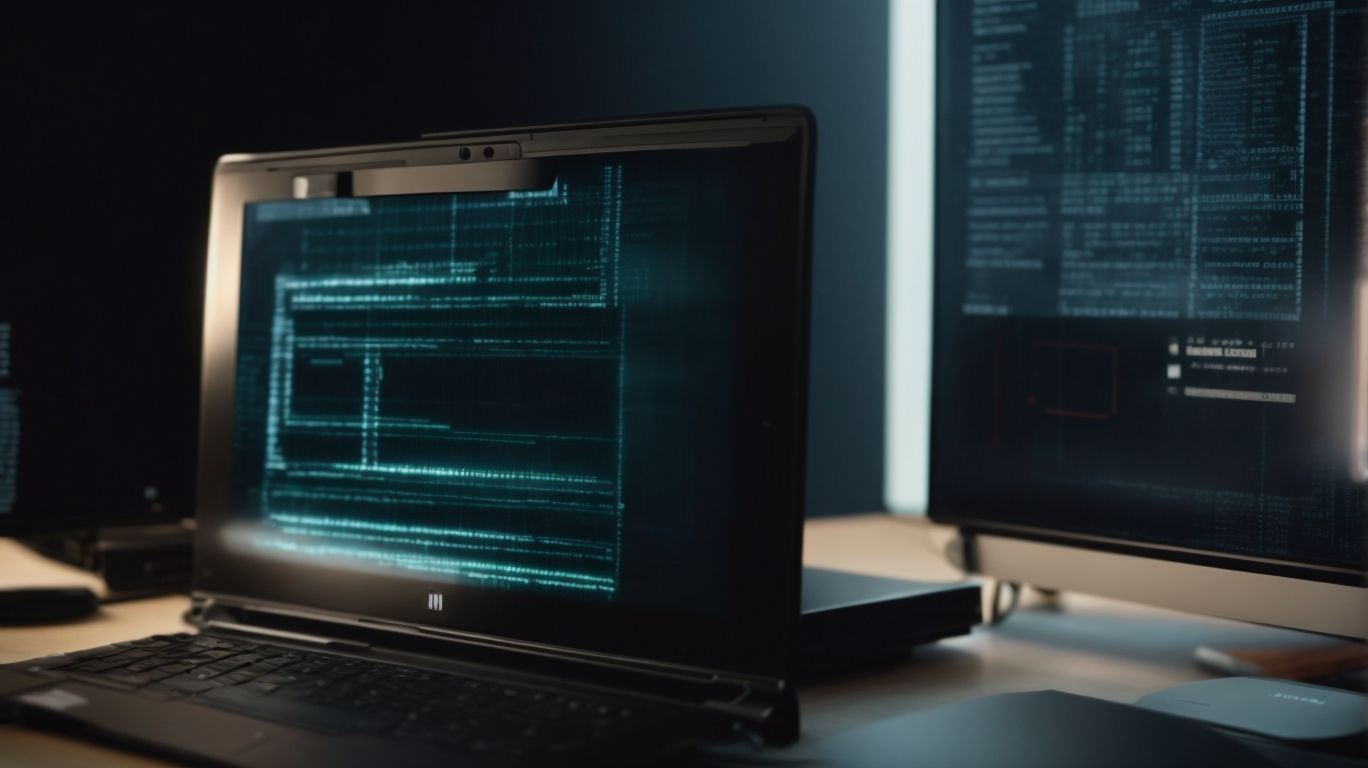Phishing attacks have been a common threat for years, but they have evolved into a more sophisticated form known as Phishing 2.0. This new generation of email scams utilizes advanced social engineering tactics, spoofing techniques, and the use of malware and ransomware to target individuals, businesses, and government agencies.
This article will explore how phishing has evolved, the targets of Phishing 2.0, signs of an attack, how to protect yourself, what to do if you fall victim, and how organizations can safeguard against these threats.
Table of Contents
Key Takeaways:
Phishing 2.0 is an evolved form of email scams that use advanced techniques such as social engineering, spoofing, and malware to target individuals, businesses, and government agencies. Suspicious sender information, urgent/threatening language, and suspicious attachments/links are signs of a Phishing 2.0 attack. To protect against Phishing 2.0, use strong passwords, enable two-factor authentication, be cautious of suspicious emails, and keep software up to date.
What Is Phishing 2.0?
Phishing 2.0 represents the next phase in cybercriminal tactics, leveraging advanced methods to deceive individuals and organizations.
This evolution in phishing attacks is characterized by a remarkable refinement of strategies employed by cybercriminals. Gone are the days of poorly constructed emails riddled with spelling errors; modern cybercriminals now use sophisticated social engineering techniques to craft highly convincing emails and websites that mimic legitimate platforms with alarming accuracy.
By exploiting human psychology and manipulating trust, these cyber adversaries often succeed in tricking even the most vigilant individuals into divulging sensitive information such as login credentials or financial details.
The seamless integration of phishing attacks into various communication channels, from emails to social media messages, has further amplified the reach and impact of these deceptive practices. The utilization of advanced tools and technologies enables cybercriminals to launch highly targeted attacks that are tailored to specific victims, making them even more challenging to detect and defend against.
How Has Phishing Evolved?
The evolution of phishing has seen cybercriminals adopt more complex tactics, utilizing link-based URLs, malicious attachments, and targeted attacks like Business Email Compromise (BEC) and spearphishing.
Cybercriminals have shifted towards leveraging malware and ransomware to enhance the effectiveness of their schemes. These malicious software can be embedded in emails or links, allowing attackers to gain unauthorized access to sensitive data or lock down systems until a ransom is paid.
The rise in sophisticated social engineering methods has made it challenging for individuals to distinguish between legitimate communications and fraudulent attempts. Attackers exploit psychological manipulation to deceive users into disclosing confidential information or granting access to corporate networks.
Social Engineering Tactics
Social engineering tactics employed in phishing attacks leverage psychological manipulation to extract sensitive personal information from unsuspecting individuals.
Social engineering in phishing campaigns operates by preying on inherent human vulnerabilities and triggers, exploiting emotions like fear, curiosity, or urgency to extract confidential data or credentials.
Through careful research and observation, cybercriminals personalize their phishing messages to craft convincing narratives that prompt victims to disclose sensitive information unknowingly.
These tactics often involve creating a sense of urgency or authority to manipulate individuals, leading them to bypass their normal skepticism and security protocols.
Advanced Spoofing Techniques
Advanced spoofing techniques in phishing 2.0 enable cybercriminals to masquerade as legitimate entities, increasing the authenticity of fraudulent communications.
In email spoofing, cybercriminals manipulate email headers to make it appear as if the message is coming from a trusted source, tricking recipients into providing sensitive information or clicking on malicious links.
Domain mimicry involves creating fake websites that closely resemble legitimate ones, luring victims into entering their credentials or personal details unknowingly.
Caller ID manipulation is another common tactic where fraudsters alter the displayed phone number to make it seem like the call is from a reputable organization, deceiving individuals into divulging confidential information.
Use of Malware and Ransomware
The integration of malware and ransomware payloads in phishing attacks poses significant threats, with cybercriminals exploiting vulnerabilities to deploy malicious software and ransomware.
When malware is unleashed through a phishing campaign, it can result in severe consequences, ranging from data breaches compromising sensitive information to encryption attacks that render data inaccessible. These breaches often lead to extensive damage, affecting not only individuals but also organizations and businesses on a large scale. The attackers often demand ransom payments in exchange for decrypting the data, putting victims in a difficult position. This sophisticated approach by cybercriminals requires advanced cybersecurity measures and proactive strategies to mitigate the risks and protect against evolving malware threats.
What Are the Targets of Phishing 2.0?
Phishing 2.0 targets a diverse range of entities, including individuals, businesses, and government agencies, seeking to exploit vulnerabilities and extract sensitive data.
These attacks cast a wide net, aiming to trick unsuspecting victims into revealing personal information, financial details, or login credentials. The consequences of falling prey to these sophisticated scams can be devastating. Individuals may face identity theft, financial loss, or unauthorized access to their accounts. For businesses, the potential repercussions extend to compromised data integrity, financial damage, and reputational harm. Government bodies, also prime targets, risk exposure of classified information, operational disruption, and compromised national security. The evolving landscape of cyber threats, including data breaches and phishing 2.0, necessitates continuous vigilance and robust security measures.
Individuals
Individuals are prime targets for phishing attacks, with cybercriminals luring them through enticing offers, seasonal events, and discounts.
Phishing scams have evolved to exploit the human tendency to trust and click without careful consideration. Through sophisticated social engineering tactics, scammers manipulate their victims into divulging sensitive information or clicking on malicious links. By crafting personalized lures that target specific interests or demographics, they increase the chances of success. The access to personal information obtained through data breaches or social media also makes individuals susceptible to targeted attacks. These fraudulent schemes are becoming increasingly sophisticated, posing significant risks to unsuspecting consumers.
Businesses
Businesses face heightened risks from phishing 2.0 attacks, especially with the use of sophisticated spearphishing techniques targeting key personnel and technology vendors.
These malicious cyber attacks can lead to severe financial losses, reputation damage, and compromised sensitive data. Technology vendors play a crucial role in helping businesses combat phishing by providing advanced security solutions, employee training, and ongoing support. Implementing fraud prevention measures such as multi-factor authentication, email encryption, and regular security assessments is imperative to shield against evolving threats.
The implications of targeted cyber attacks go beyond immediate financial losses, impacting customer trust, regulatory compliance, and overall business continuity. Businesses must remain vigilant and proactive in enhancing their business security strategies to detect, prevent, and mitigate potential phishing threats effectively.
Government Agencies
Government agencies are prime targets for cyber espionage and BEC attacks, with threat actors aiming to gain access to sensitive data and classified information. Learn more about the evolution of email scams.
These agencies face multiple challenges when combating phishing attacks, as cyber criminals constantly evolve their tactics to bypass traditional security measures. The risk of data breaches looms large, with potential consequences ranging from compromised national security to financial losses and reputational damage.
To combat this, agencies must implement robust security protocols that include multi-factor authentication, encryption, employee training, and continuous monitoring of network traffic. The integration of threat intelligence solutions can provide real-time insights into emerging threats and help preempt potential cyberattacks.
What Are the Signs of a Phishing 2.0 Attack?
Recognizing the signs of a phishing 2.0 attack involves identifying red flags such as suspicious sender details, urgent language, and dubious attachments or links.
Phishing attacks 2.0 have become increasingly sophisticated, often mimicking legitimate companies or individuals to deceive unsuspecting victims. It is crucial to exercise caution when you receive emails prompting immediate action or offering unrealistic rewards. Scrutinizing email addresses for slight variations from the official ones and checking for spelling errors can help in spotting potential scams. Verifying the legitimacy of links by hovering over them (without clicking) or cross-checking with the official website can prevent falling into the trap of phishing websites. Always verify attachments by using antivirus software to scan for malicious content.
Suspicious Sender Information
Phishing emails often contain suspicious sender information, such as unfamiliar addresses or deceptive display names, signaling potential fraudulent intent.
One crucial aspect to be mindful of when tackling phishing attempts is to meticulously scrutinize the sender details embedded in these deceptive emails. By conducting a thorough email header analysis, recipients can unveil hidden clues that may expose the true origin of the message. This analysis involves examining technical data like the IP address, originating server, and email route – essential in uncovering potential inconsistencies indicative of a malicious sender.
Urgent or Threatening Language
Phishing 2.0 messages frequently employ urgent or threatening language to evoke a sense of panic or urgency, compelling recipients to act impulsively.
This manipulation plays into psychological coercion tactics aimed at exploiting human emotions and decision-making processes. By creating a sense of immediate threat or consequence, hackers push individuals to disregard caution and quickly comply with their demands. The urgency triggers embedded in these messages trigger amygdala responses, activating the brain’s fight-or-flight mode. Coupled with persuasive appeals to authority or fear, recipients often overlook red flags like suspicious domain names or poor grammar due to the heightened emotional state induced by the urgent language.
Suspicious Attachments or Links
Attachments and hyperlinks in phishing emails serve as potential vectors for malware delivery, urging caution in interacting with unknown URLs and downloadable files.
Phishing messages often contain cunningly disguised URLs that redirect to harmful websites designed to steal sensitive information.
Malware payloads hidden within these attachments can infiltrate systems, compromising security and privacy.
URL analysis is crucial, as it helps identify suspicious links that may lead to phishing sites or download malicious software.
Deploying anti-phishing software enhances defense mechanisms, providing real-time protection against cyber threats and potential data breaches.
How Can You Protect Yourself from Phishing 2.0?
Shielding yourself from phishing 2.0 necessitates adopting robust security practices like using strong passwords, enabling multi-factor authentication, and safeguarding your credentials.
In today’s digital landscape, cybercriminals are becoming increasingly sophisticated in their phishing techniques, making it imperative for individuals to stay vigilant and proactive in protecting their online accounts.
One key strategy is to regularly update and rotate passwords to prevent unauthorized access.
Setting up multi-factor authentication adds an extra layer of security by requiring more than just a password for accessing accounts.
It’s also crucial to protect your credentials by avoiding sharing sensitive information or clicking on suspicious links.
Use Strong Passwords
Employing strong, unique passwords is a fundamental defense against credentials theft and unauthorized access to personal accounts and sensitive data.
When creating a password, it’s advisable to use a combination of uppercase and lowercase letters, numbers, and special characters to enhance security. Avoid using easily guessable information like birthdays or pet names, as these can be easily cracked by hackers using automated tools.
Consider utilizing password manager tools that can generate and securely store complex passwords for different accounts, eliminating the need to remember each one. Regularly updating passwords and enabling two-factor authentication provide added layers of protection, reducing the risk of unauthorized access.
Enable Two-Factor Authentication
Implementing two-factor authentication adds an extra layer of security, requiring additional verification steps beyond passwords to protect your credentials.
When setting up multi-factor authentication, you typically integrate various authentication protocols that may include something you know (like a password), something you have (such as a smart card or token), or something you are (biometric data). This combination significantly improves security by making it harder for unauthorized individuals to gain access.
One common method is OTP verification, where a temporary code is sent to your registered device after entering your password. This one-time code serves as a secondary credential, enhancing security even if your password is compromised.
Be Cautious of Suspicious Emails
Exercise caution when encountering suspicious emails, as cybercriminals often use phishing tactics to deceive recipients and perpetrate scams through social engineering.
One crucial step in identifying fraudulent emails is to verify the sender’s email address meticulously. Scammers may try to imitate legitimate senders, so pay attention to any slight discrepancies in the email address. Refrain from clicking on any links or downloading attachments from unknown or suspicious emails, as these could contain malware designed to compromise your device or steal personal information.
It’s essential to be aware of common red flags in phishing emails, such as urgent requests for personal or financial information, grammatical errors, and offers that seem too good to be true. By staying informed and practicing vigilance, you can better protect yourself from falling victim to email scams and cyber fraud.
Keep Your Software Up to Date
Regularly updating your software and security tools is crucial to defend against evolving phishing attacks and vulnerabilities identified by technology vendors.
Software updates play a critical role in enhancing cybersecurity resilience by ensuring that known vulnerabilities are patched promptly. Patch management, a key aspect of software updates, involves applying fixes to address security weaknesses and protect against unauthorized access.
Staying abreast of the latest updates helps in mitigating potential risks and fortifying defenses against sophisticated cyber threats. Technology vendors actively contribute to this effort by rapidly identifying security gaps and releasing patches to close them, aiding in preemptive threat prevention.
What to Do If You Fall Victim to Phishing 2.0?
If you become a victim of phishing 2.0, it is crucial to act swiftly to mitigate potential damages, including reporting the incident, securing your accounts, and seeking assistance from cybersecurity professionals.
After reporting the phishing incident, the next step is to secure all your online accounts by changing passwords, enabling two-factor authentication, and monitoring for any suspicious activities.
Seek assistance from cybersecurity experts to assess the extent of the breach and to determine if any sensitive data has been compromised. They can provide guidance on how to strengthen your defenses to prevent future cyber attacks.
Consider implementing fraud prevention measures such as monitoring financial statements regularly, contacting banks to flag potential fraudulent transactions, and educating yourself on common phishing red flags to avoid future scams.
How Can Organizations Protect Themselves from Phishing 2.0?
Safeguarding organizations against phishing 2.0 demands a multi-faceted approach encompassing employee education, robust security measures, and regular security audits to fortify defenses and mitigate cyber risks.
Effective employee training programs play a pivotal role in give the power toing staff to recognize and respond adeptly to phishing attempts, thus serving as the frontline defense. Security infrastructure enhancements such as implementing advanced email filters, endpoint protection, and encryption technologies are essential in fortifying digital perimeters against evolving threats. Simultaneously, regular compliance audits ensure that security protocols adhere to industry standards, detect vulnerabilities, and drive continuous improvement to bolster resilience against sophisticated cyber adversaries.
Employee Education and Training
Employee education and training initiatives play a pivotal role in enhancing organizational resilience against phishing attacks, give the power toing staff to recognize and thwart cyber threats effectively.
One of the primary aspects of these initiatives is conducting regular phishing simulations to test employees’ awareness and responses to deceptive email strategies. By exposing staff to simulated phishing attacks, organizations can assess their susceptibility levels and provide targeted training where needed. Equipping employees with threat recognition techniques enhances their ability to discern suspicious activities and potential security breaches. This includes educating them on common threat indicators, such as unusual email requests or unfamiliar website links, that could signify malicious intent.
Outlining clear incident reporting protocols give the power tos employees to promptly escalate any security concerns or incidents they encounter. Encouraging a culture of transparency and accountability in incident reporting lays a strong foundation for swift response and mitigation of cyber threats within the organization. This proactive approach not only strengthens the organization’s overall security posture but also fosters a sense of collective responsibility among staff towards safeguarding sensitive information and assets.
Implementing Strong Security Measures
The implementation of robust cyber security tools and behavior analytics solutions bolsters an organization’s defenses against phishing attacks, enabling proactive threat detection and mitigation.
Among the key methods used to enhance protection against phishing threats, email filters play a critical role in identifying and blocking malicious emails before they even reach users’ inboxes. These filters analyze email content, attachments, and sender details to flag potential phishing attempts, reducing the risk of employees falling victim to such scams.
Anti-phishing software offers an extra layer of defense by actively scanning for signs of phishing across various communication channels, including emails and websites. This software is designed to detect and neutralize phishing attempts in real-time, thereby thwarting potential security breaches.
Regular Security Audits
Regular security audits are essential for organizations to evaluate their vulnerability to phishing attacks, assess credential management practices, and validate the effectiveness of multi-factor authentication mechanisms.
These audits play a crucial role in identifying potential weaknesses in the organization’s security posture. When conducting a security audit, one of the key aspects that are thoroughly examined is the credential hygiene within the system. This involves checking for any weak or reused passwords, ensuring proper access controls are in place, and monitoring privileged account usage.
Security audits also focus on the validation of multi-factor authentication (MFA). Verifying the MFA implementation is critical as it adds an extra layer of security beyond passwords, minimizing the risk of unauthorized access. https://www.youtube.com/embed/PTE2oqMcfSw
Frequently Asked Questions
What is Phishing 2.0?
Phishing 2.0 is the term used to describe the evolution of email scams, where fraudsters have become more sophisticated in their techniques to steal personal and financial information from unsuspecting victims.
How does Phishing 2.0 work?
Phishing 2.0 scams typically involve sending fraudulent emails that appear to be from legitimate companies or individuals in order to trick recipients into providing sensitive information or clicking on malicious links.
What are the signs of a Phishing 2.0 email?
Phishing 2.0 emails often use urgent or alarming language, contain spelling and grammar errors, and may request personal information or ask you to click on a link that takes you to a fake website.
How can I protect myself from Phishing 2.0 scams?
To protect yourself from Phishing 2.0 scams, be cautious of unexpected emails requesting personal information, never click on links or open attachments from unknown senders, and always double check the sender’s email address for any suspicious characters.
What should I do if I think I have fallen for a Phishing 2.0 scam?
If you have provided personal information or clicked on a link from a suspected Phishing 2.0 email, immediately change your passwords and contact your bank or credit card company to inform them of the potential breach.
Can businesses protect themselves from Phishing 2.0 attacks?
Yes, businesses can protect themselves from Phishing 2.0 attacks by implementing strong email security protocols, educating employees about potential scams, and regularly updating software and systems to prevent cyber attacks.







